High cholesterol is a common health concern that affects millions of people worldwide. When cholesterol levels rise above the healthy range, they can increase the risk of heart disease, stroke, and other cardiovascular problems.
Fortunately, one of the most effective and natural ways to manage cholesterol is through diet. By making smart food choices, you can lower “bad” LDL cholesterol, raise “good” HDL cholesterol, and improve your heart health.
In this article, we’ll explore the 10 best foods that help lower cholesterol levels naturally, backed by scientific evidence and nutrition experts.
1. Oats
Oats are among the most well-known cholesterol-lowering foods, thanks to their high soluble fiber content—especially a type called beta-glucan. Soluble fiber binds to cholesterol particles in the digestive system and helps remove them from the body before they enter the bloodstream.
Why it helps:
Studies show that consuming just 3 grams of beta-glucan per day can reduce LDL cholesterol by up to 10%.
How to enjoy:
Start your morning with a bowl of oatmeal topped with fruit, nuts, or chia seeds. You can also use oats in smoothies or bake them into healthy muffins.
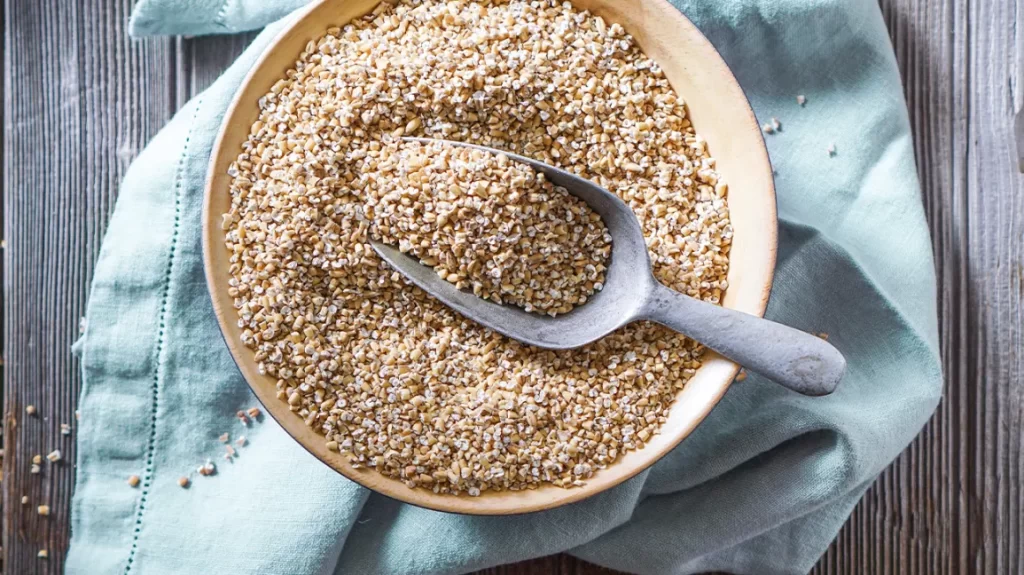
2. Fatty Fish
Fatty fish like salmon, mackerel, sardines, and tuna are rich in omega-3 fatty acids, which help lower triglycerides, reduce inflammation, and raise HDL cholesterol levels. Omega-3s also make the blood less sticky, preventing clots that can lead to heart attacks.
Why it helps:
Replacing red meat with fish a few times a week can lower LDL cholesterol and improve overall cardiovascular health.
How to enjoy:
Air fry or bake fish instead of frying. Aim for at least two servings per week, as recommended by the American Heart Association.

3. Nuts (Almonds, Walnuts, Pistachios)
Nuts are tiny powerhouses of nutrition packed with healthy unsaturated fats, fiber, plant sterols, and antioxidants. Regular nut consumption has been shown to reduce LDL cholesterol while supporting overall heart health.
Why it helps:
Eating a handful of nuts (about 1.5 ounces daily) may lower LDL cholesterol by 5–10%. Walnuts, in particular, contain omega-3 fatty acids similar to those found in fish.
How to enjoy:
Snack on raw or roasted nuts, sprinkle them on salads or yogurt, or blend them into smoothies. Just watch your portion sizes, as nuts are calorie-dense.
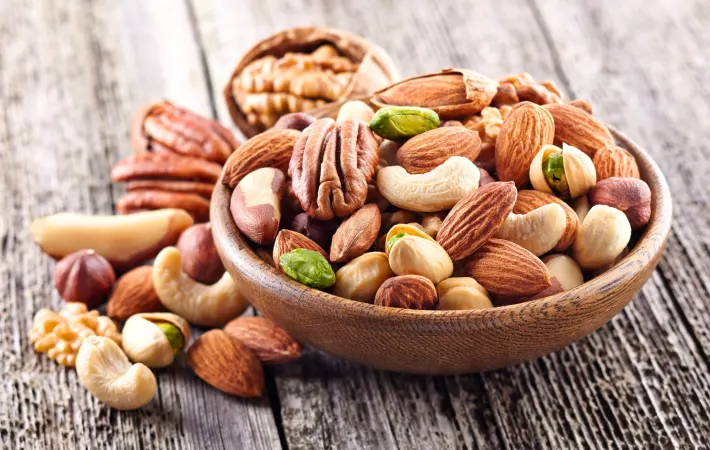
4. Olive Oil
Olive oil is a cornerstone of the Mediterranean diet, one of the healthiest eating patterns in the world. It’s rich in monounsaturated fats, which help lower LDL cholesterol without lowering HDL cholesterol.
Why it helps:
Replacing butter, margarine, or other saturated fats with extra virgin olive oil can significantly improve cholesterol profiles.
How to enjoy:
Use olive oil as your primary cooking oil, drizzle it over salads, or use it for dipping bread.
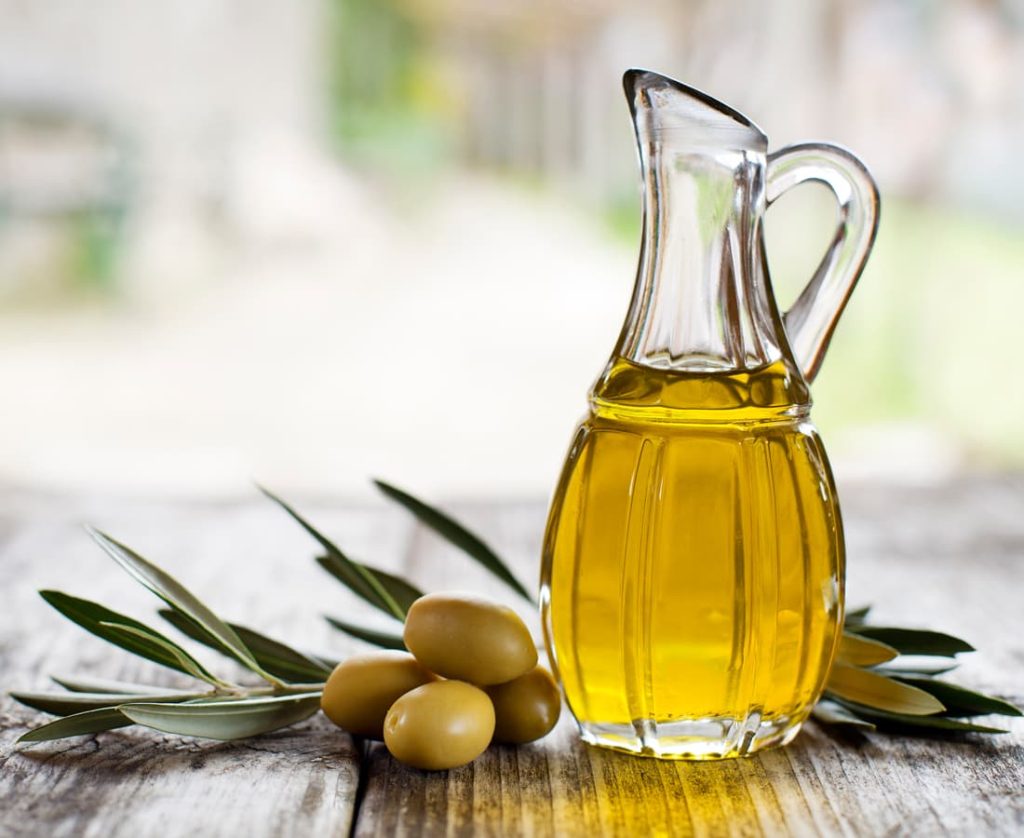
5. Avocados
Avocados are unique fruits packed with heart-healthy monounsaturated fats, fiber, and antioxidants. Studies have shown that regular avocado consumption can lower LDL cholesterol and triglycerides while increasing HDL cholesterol.
Why it helps:
A study published in the Journal of the American Heart Association found that eating one avocado per day lowered LDL cholesterol in overweight adults.
How to enjoy:
Add avocado slices to sandwiches, blend them into smoothies, or make guacamole for a nutritious dip.
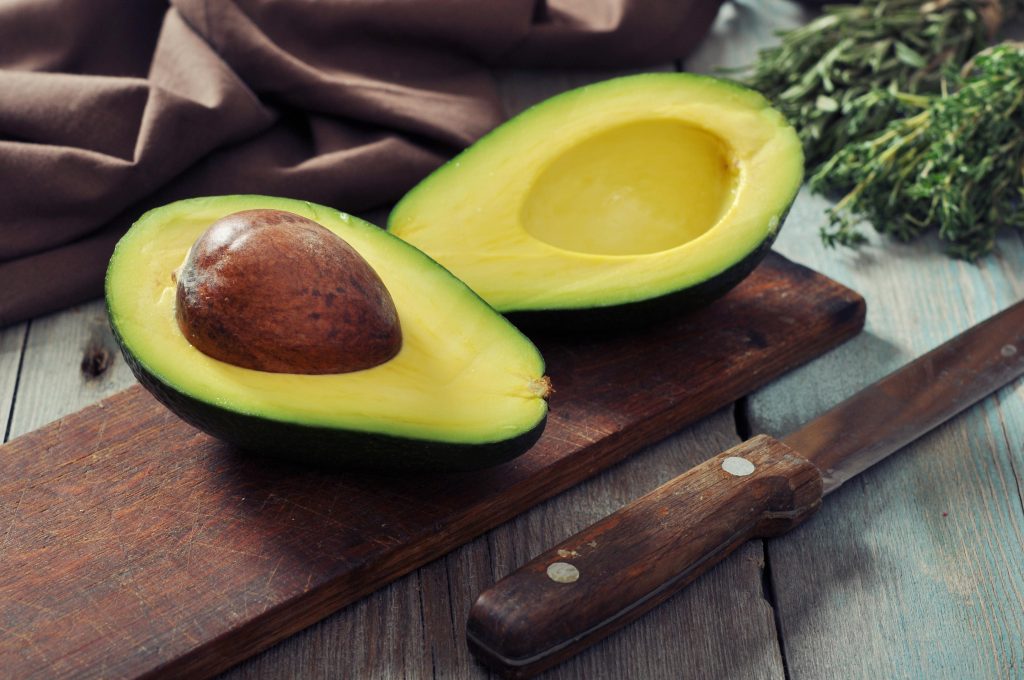
6. Legumes (Beans, Lentils, Chickpeas, Peas)
Legumes are rich in soluble fiber, plant protein, and antioxidants—all of which contribute to lowering cholesterol levels. They also help keep you full, reducing the temptation to eat high-fat foods.
Why it helps:
Replacing red meat with legumes a few times per week can reduce LDL cholesterol by 5–10% and improve blood sugar control.
How to enjoy:
Add lentils to soups and salads, use chickpeas in hummus, or make bean-based dishes like chili or stews.

7. Fruits Rich in Pectin (Apples, Citrus, Strawberries, Grapes)
Pectin is a type of soluble fiber found in many fruits that helps block cholesterol absorption in the bloodstream. Fruits also provide antioxidants that prevent LDL cholesterol from oxidizing—a process that contributes to plaque buildup in arteries.
Why it helps:
Regular consumption of pectin-rich fruits can lower LDL cholesterol and reduce the risk of heart disease.
How to enjoy:
Eat whole fruits instead of fruit juice for maximum fiber benefits. Add apple slices to oatmeal or toss citrus and berries into salads.
8. Soy Foods
Soy-based foods like tofu, edamame, and soy milk contain plant-based proteins and isoflavones that help reduce LDL cholesterol and triglycerides. Soy can be a great alternative to animal protein, especially when you’re trying to reduce saturated fat intake.
Why it helps:
Consuming 25 grams of soy protein per day may lower LDL cholesterol by about 5–6%, according to the FDA.
How to enjoy:
Replace meat with tofu in stir-fries, add soy milk to smoothies, or snack on steamed edamame.
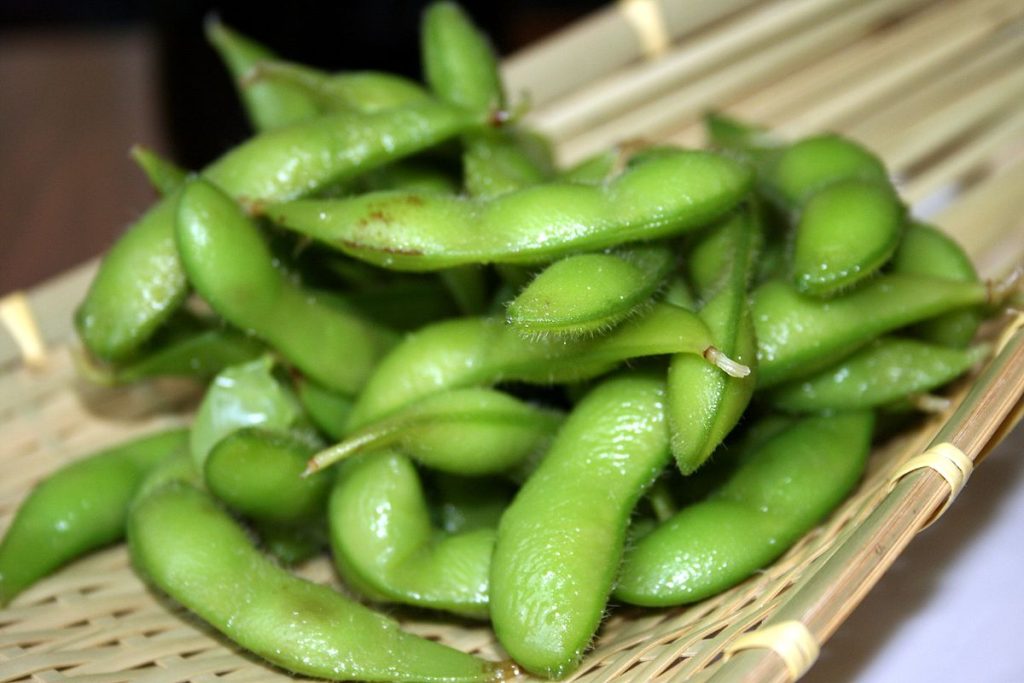
9. Dark Leafy Greens
Vegetables like spinach, kale, collard greens, and Swiss chard are loaded with fiber, antioxidants, and plant sterols—natural compounds that help block cholesterol absorption in the gut. These greens are also low in calories, making them perfect for heart-healthy diets.
Why it helps:
The lutein found in dark leafy greens helps prevent cholesterol from binding to artery walls, reducing plaque buildup.
How to enjoy:
Use spinach in salads, add kale to smoothies, or sauté collard greens with garlic and olive oil for a tasty side dish.
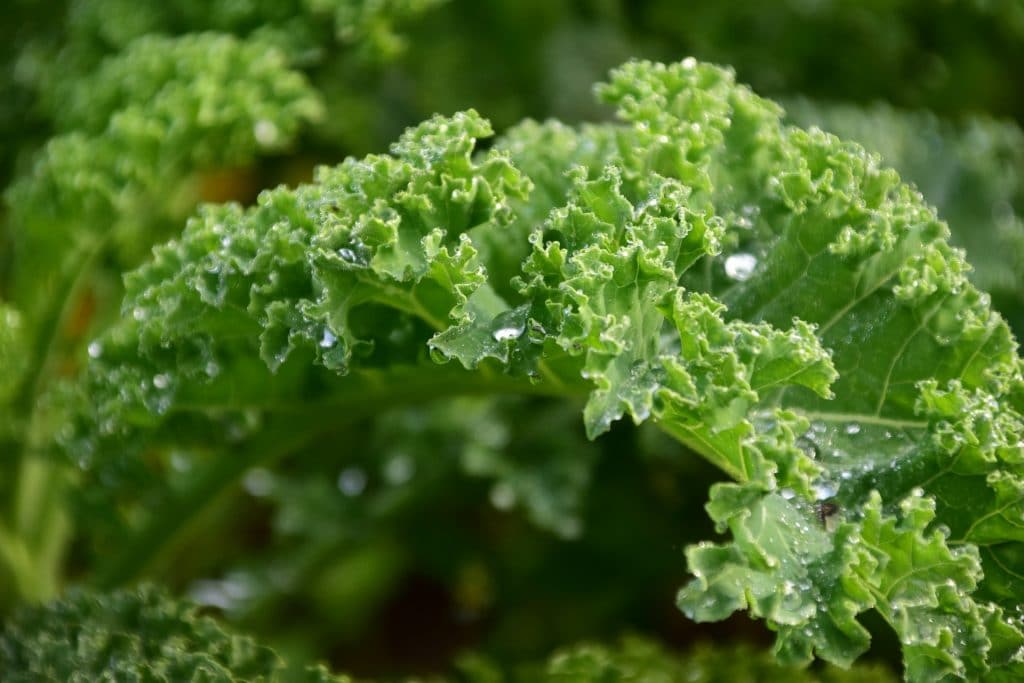
10. Green Tea
Green tea has been praised for its numerous health benefits, and one of them is its ability to lower cholesterol levels. It contains powerful antioxidants called catechins, which help reduce LDL cholesterol and prevent it from oxidizing.
Why it helps:
Research shows that drinking green tea regularly can lower total cholesterol and LDL cholesterol without affecting HDL levels.
How to enjoy:
Drink 2–3 cups of green tea daily for best results. Choose unsweetened green tea to avoid added sugars.
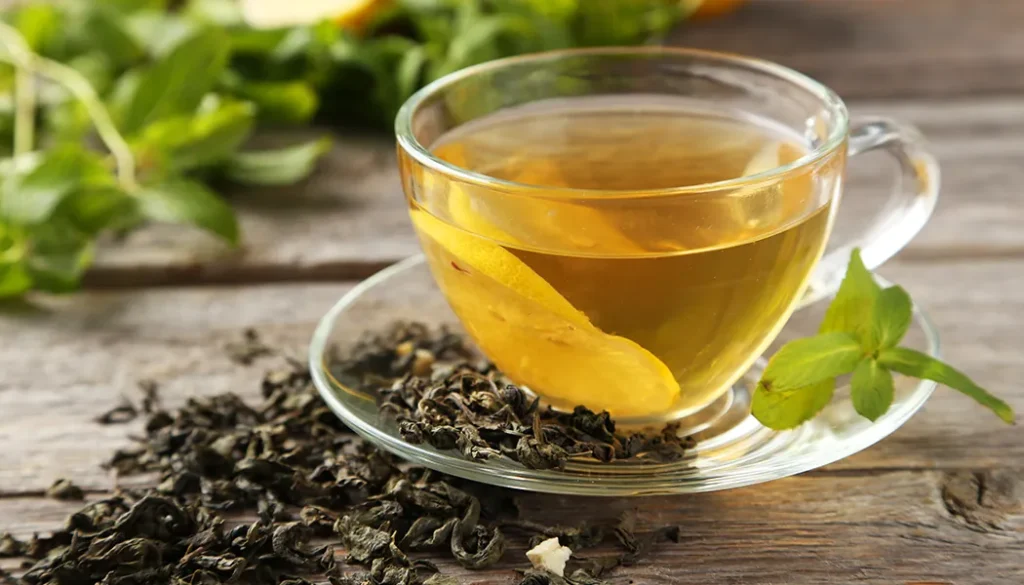
Bonus Tips for Lowering Cholesterol Naturally
While diet plays a crucial role, other lifestyle changes can enhance your results:
Exercise regularly:
Engage in at least 30 minutes of moderate physical activity most days of the week to boost HDL cholesterol.
Maintain a healthy weight:
Losing even a small amount of weight can lower LDL cholesterol and triglycerides.
Quit smoking:
Smoking lowers good HDL cholesterol and damages arteries.
Limit saturated and trans fats:
Avoid processed foods, fried items, and fatty meats. Replace them with healthy fats from nuts, seeds, and fish.
Drink alcohol in moderation:
Moderate alcohol consumption may raise HDL, but excessive drinking harms the heart.
Sample Daily Meal Plan for Lowering Cholesterol
- Breakfast: Oatmeal with sliced bananas and walnuts, and a cup of green tea.
- Lunch: Lentil soup with a spinach and avocado salad drizzled with olive oil.
- Snack: Apple slices with almond butter.
- Dinner: Grilled salmon with steamed broccoli and quinoa.
- Dessert: Fresh berries with a small serving of soy yogurt.
This meal plan is rich in soluble fiber, healthy fats, and plant-based protein—key nutrients that help reduce cholesterol naturally.
Final Thoughts
Managing cholesterol doesn’t have to mean strict dieting or giving up your favorite foods. Instead, it’s about making smarter choices—favoring whole, plant-based, and nutrient-rich foods that work with your body to keep your heart healthy.
From fiber-rich oats and legumes to omega-3-packed fish and antioxidant-loaded fruits, the foods listed above are scientifically proven to help lower cholesterol levels naturally. By incorporating these ten superfoods into your daily diet and maintaining an active lifestyle, you can take significant steps toward protecting your heart and living a longer, healthier life.
